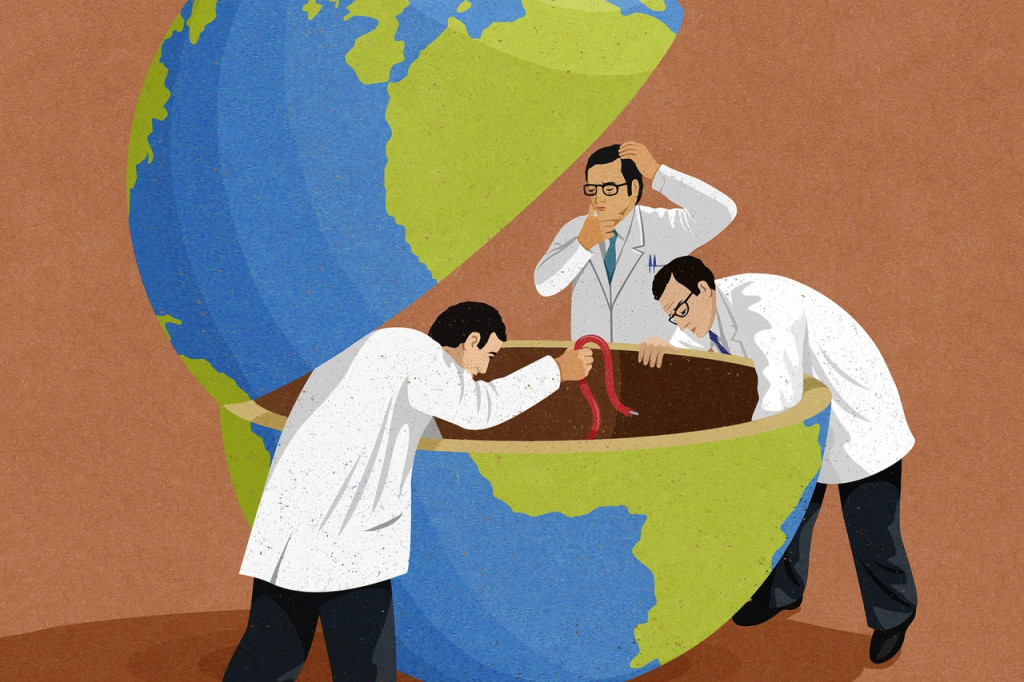Earlier this month the Wall Street Journal ran an opinion piece by Dr. Judith Curry, former chairwoman of the School of Earth and Atmospheric Sciences at the Georgia Institute of Technology and the President of the Climate Forecast Applications Network. The gist of the article is simple: global warming predictions based on current models are predicting unrealistically high levels of climate change. The real levels–based on observational models–are much lower.
Continuing to rely on climate-model warming projections based on high, model-derived values of climate sensitivity skews the cost-benefit analyses and estimates of the social cost of carbon. This can bias policy decisions. The implications of the lower values of climate sensitivity in our paper, as well as similar other recent studies, is that human-caused warming near the end of the 21st century should be less than the 2-degrees-Celsius “danger” level for all but the IPCC’s most extreme emission scenario.
This slower rate of warming—relative to climate model projections—means there is less urgency to phase out greenhouse gas emissions now, and more time to find ways to decarbonize the economy affordably. It also allows us the flexibility to revise our policies as further information becomes available.
To me, this represents a moderate and mature approach to climate change. Curry’s work neither denies global warming nor the human factor in causing global warming. It simply suggests that climate models are biased upwards, and that we might have more time. Time that could be used to develop more sophisticated solutions to a post-carbon economy. This is really important given news like (just as an example) the announcement from Lockheed Martin that they are just 5 years away from a prototype nuclear fusion reactor.
I just finished reading Tim Flannery’s Here on Earth, which was the most eloquent and serious defense of the Gaia Hypothesis I’ve ever read, so I really like the idea of greater human responsibility for our environment. I just think we’ll do a better job of living up to that responsibility if we have (1) a little less partisanship and (2) a deeper understanding of the relevant science. A little more time can help.

Judith Curry may have done some modeling which concludes that the climate sensitivity may be less than many climate scientists believe, but are you willing bet the fate of future generations are her results? What if she is wrong? Isn’t she just modeling “transient climate sensitivity” to get the expected temperature for 2100? “Earth systems sensitivity” is certainly a lot higher, so temperatures would likely increase beyond 2100, with very possible devastating consequences for future generations. Give the information below, wouldn’t it be prudent to reduce CO2 emissions as fast as possible, ideally getting near zero by 2050?
1. CO2 emissions currently match those of the most extreme IPCC emission scenarios (see http://robertscribbler.wordpress.com/2014/09/22/worst-case-carbon-dioxide-emissions-increases-continue-hitting-40-billion-tons-per-year-in-2013/)
2. Atmospheric warming have slowed, but (1) total Earth content has continued to rise as most of the heat goes into the oceans (http://johncarlosbaez.wordpress.com/2014/04/11/what-does-the-new-ipcc-report-say-about-climate-change-part-4/) (2) Since only 2.3% of the recent heating has gone into the atmosphere (http://climatestate.com/2013/09/02/world-ocean-heat-content-and-thermosteric-sea-level-change-0-2000-m-1955-2010/), change in atmospheric temperatures over relatively short time are not necessarily significant, and (3) since El Nino and La Nina have such an impact on global temperatures, you really need to looks a the temperature changes categorized by “type of year” (see http://www.wunderground.com/blog/JeffMasters/comment.html?entrynum=2374), in which case the atmospheric temperatures have been increasing at the same steady rate since 1970
3. When the summer-time Arctic ocean becomes ice free (likely before 2050), “the planet would have an additional heating effect just as large as the heating effect of all human CO2 and other greenhouse gasses to date.” (see (http://blogs.scientificamerican.com/guest-blog/2012/09/21/arctic-sea-ice-what-why-and-what-next/). Did Ms Curry take that into account?
4. The IPCC has really underestimated when the summer-time Arctic ocean will likely become ice free (http://nca2014.globalchange.gov/sites/report/files/images/web-large/CS_sea-ice-projections_V6_0.png)
5. The “equilibrium sea level rise” is likely around 10 meters/°C (see http://www.roperld.com/science/sealevelvstemperature.htm), although the equilibrium will not likely be reached for hundreds or thousands of years. So we have already “locked in” about 30 feet of sea level rise even if CO2 emissions ended tomorrow (if the Earth becomes ice free with a 6-8°C temperature rise and the resulting sea level rise is about 80 meters, the average sea level rise must be 10-13 meters/°C)
6. The IPCC is very conservative in is forecasts of sea level rise. For example, it predicts about .62 meters if SLR with RPC8.5,whereas experts expect a .7-1.2 meter SLR with RPC8.5 (see http://www.washingtonpost.com/blogs/wonkblog/wp/2013/11/26/how-high-will-sea-levels-rise-lets-ask-the-experts/)
7. The ocean acidification caused by the increased atmospheric CO2 will likely have devastating consequences. For example. “A 20 percent increase above current carbon dioxide levels, which could occur within the next two decades, could significantly reduce the ability of corals to build their skeletons and some could become functionally extinct within this timeframe.” (http://oceana.org/en/our-work/climate-energy/ocean-acidification/learn-act/effect-of-ocean-acidification-on-corals)